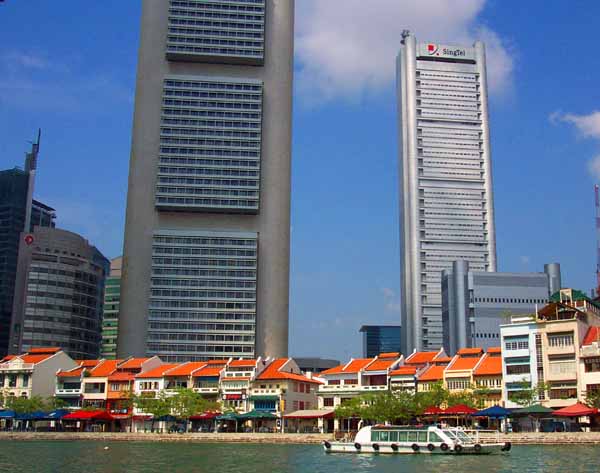
The restaurants of Boat Quay with Singapore's high rise towers in the background.
The British imported Chinese workers as well as peoples from other parts of the empire. These groups often congregated into their own districts, giving Singapore areas with distinctive buildings and styles. Take a walk down Arab street, where you'll find fabrics from across Asia. Not far from here, along Serangoon street, is "little India." Of course, there's also a Chinatown.
Over the last few years are so, numerous "historical" areas have been developed, such as Bugis Junction, Boat Quay, Clarke Quay and Tanjong Pagar. These are very tourist-oriented areas, where the development has a Disneyland quality to it. The buildings have been completely gutted, and some even built from scratch, to conform to an ideal of what we think old Singapore should look like, rather than what they really were. That doesn't make them bad places for eating a relaxing dinner, though.
Our favorite was Clarke Quay, with its carts and small curio shops to poke around in while trying to decide what kind of food you're in the mood for. Unfortunately, the area has just had a big make-over, which has seen the exterior areas covered with huge plastic umbrellas. The carts and most of the small shops are now gone. Boat Quay's main attraction is that almost all the dining area is right on the river. Across the river, the neo-classical museum is brightly lit at night, making a highly romantic setting for an intimate dinner. After dinner, take a stroll down past the end of Boat Quay where the plaza of a large modern office complex affords many places to sit and watch the lights play on the water.
Each of the districts is small enough to easily see on foot, and there are naturally several walking tours on offer from many operators.